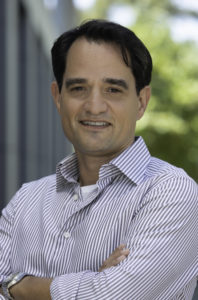Researchers Uncover New Understanding of Medulloblastoma in CBTN Datasets
Almost all of the DNA of the human genome is located on 23 pairs of chromosomes, each a long coil of a single tightly-wound DNA strand. When a cell replicates, it duplicates each chromosome, then sends the duplicates to opposite ends of the dividing cell, ensuring that each daughter cell gets one copy of each chromosome. In some cancers, however, a segment of DNA has been cut out of the chromosome and re-formed as a circular DNA strand.
These unique molecules are known as extrachromosomal circular DNA (ecDNA), and they do not segregate equally like the chromosomes, with profound consequences for the evolution and progression of that cancer. In many cases, each cell in an ecDNA+ cancer may contain tens or hundreds of ecDNA molecules, each encoding an oncogene that promotes cancer.

Dr. Lukas Chavez and his team at the University of California, San Diego are part of a vast network of geneticists, bioinformaticians, and oncologists working to treat pediatric cancer. Their work is supported and accelerated by the Children’s Brain Tumor Network (CBTN) and the Gabriella Miller Kids First Data Resource Center (Kids First DRC), with cloud-based analysis supported by CAVATICA.
EcDNA in cancer cells have been observed for almost sixty years, but a few key technical developments have helped to better understand their frequencies and implications in cancers. One of these technologies is large cloud-based genomic data resources, which enable the analysis of ecDNA in thousands of patient genomes. Especially for rare pediatric tumors, this is an important advance.
Most of the previous research in this area has focused on adult cancers, so Chavez and his team tapped into the pediatric tumor dataset provided by CBTN to explore the role of ecDNAs across childhood cancers. Their initial focus was on pediatric medulloblastoma (MB), the most common cancerous brain tumor type in children, with around 500 children per year diagnosed in the US. The tumor starts in the lower part of the brain called the cerebellum.

To complete their analysis, Chavez’s team used whole genome sequencing (WGS) data from pediatric patients with medulloblastoma provided by CBTN and other sources. His research group used computational methods to identify ecDNA within the tumor genomes of medulloblastoma patients, digitally reconstructing them for further analysis and visualization.
The results show ecDNA in 18% of the analyzed medulloblastoma patients. Chavez’s research discovered that these patients were more than twice as likely to relapse and three times as likely to die of disease within 5 years of diagnosis. Some tumors were even found to harbor multiple lineages of ecDNA, each containing distinct oncogenes. Overall, the results indicate that the presence of ecDNA is a frequent and potent driver of poor outcomes in MB patients. With this knowledge, computational wisdom, and the support of CBTN and the Kids First DRC, the team is ready to expand their work across pediatric cancers.
Not only are the results a promising step forward for the treatment of MB, but the computational methods developed by the team on the CAVATICA platform will be utilized to unlock more answers in datasets from the Kids First DRC. Because CBTN data is harmonized with Kids First datasets in other pediatric cancers, Chavez’s team will be able to quickly assess an additional 1,000 participants with a pediatric pan-cancer focus. The identification of circular ecDNA could mean new targets available for the treatment of pediatric cancers.
The team expects that these datasets will confirm an abundance of ecDNA in many different types of cancers. Once ecDNA diversity is better understood, researchers will be able to analyze these unique tumor features as possible therapeutic targets. Mechanisms supporting the formation and the maintenance of ecDNA within the cell will be further explored as this cutting-edge research expands.
“It’s a piece of a larger puzzle,” says Owen Chapman, graduate student in the Chavez lab. “We knew that ecDNA mediates drug resistance in cell line models. We knew that a few mutations were predictors for exceptionally aggressive medulloblastoma. Now we find those mutations on or associated with ecDNA, in the patients whose treatment is most likely to fail. We don’t think that’s coincidence, and the next step will be finding that causal relationship.”
How do ecDNAs arise in human cancer? How do they promote the evolution of drug resistance in cancer cells? The answers to these questions may unlock new therapeutic strategies for pediatric patients with ecDNA+ tumors.
